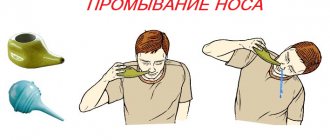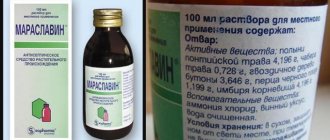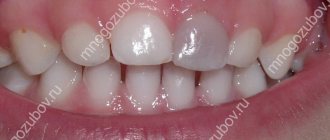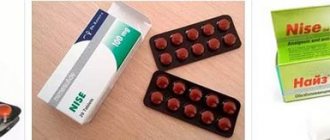It has long been known that toothache is one of the most unpleasant. Sometimes it occurs at the most inopportune moment, for example, at night, when going to the clinic is simply impossible. That is why folk remedies made from improvised ingredients are often used to solve such dental problems.
A real salvation from toothache can be rinsing your mouth with a solution based on soda and salt. The benefits of salt water have been known for a long time - this simple drug effectively disinfects the oral cavity, helps relieve swelling and pain. This and other popular mouthwashes will be discussed in the article.
Treatment of gums with salt
Causes of gum inflammation
Why salt helps
How to properly rinse your mouth with saline solution
Salt gum massage
Other methods for treating gums at home
Bleeding gums, increased sensitivity and bad breath indicate that your gums are not healthy. Why do they become inflamed? Is it necessary to see a doctor or can they be strengthened at home? How to use salt to relieve inflammation? Read more in the article.
What not to do after tooth extraction
During the first time after tooth extraction
absolutely
not allowed
:
- Touch the wound hole
with toothpicks, hard bristled brushes and other foreign objects. - There are fermented milk products. This is an excellent breeding ground for bacteria to grow.
- Go to the gym, swimming pool and bathhouse, including the sauna.
- Drink something hot and warm the wound with something.
- Chew on the side of the mouth where the tooth was removed.
- Smoking.
Causes of gum inflammation
Gum inflammation can occur for various reasons. Heredity, poor environment, bad habits, hormonal imbalance, etc. But most often, the inflammatory process in the gums occurs due to poor oral hygiene. The more plaque and soft deposits on the teeth, the higher the risk of inflammation. To prevent diseases of teeth and gums, professional hygiene is recommended, which must be done every six months (more often if necessary). The procedure removes deposits that the toothbrush did not reach, freshens breath and makes teeth noticeably whiter.
By the way, scientists conducted an interesting experiment. People who maintained good hygiene and had no dental problems stopped brushing their teeth within three weeks. The result showed that this time is quite enough for primary inflammation to appear on the gums.
What needs to be done in parallel with rinsing -
But after tooth extraction, it is important to perform not only antiseptic rinses (baths) in the oral cavity, but also to follow other recommendations, which will fully allow you to avoid the development of inflammation in the socket of the extracted tooth. Also, in addition to following general recommendations, in some cases it may be necessary to take medications - analgesics, antihistamines, and antibiotics.
- Analgesics (NSAIDs group) – the optimal choice of painkillers in dentistry are drugs from the NSAIDs group (non-steroidal anti-inflammatory drugs). Drugs in this group not only relieve pain well, but also at the same time reduce inflammation in tissues. If the removal was difficult, it is best to start taking one of these drugs before the local anesthesia wears off. Drugs from the NSAID group include: ibuprofen, nurofen, ketorol, ketanov, ketoprofen and others (which one is better - read the link above).
- Antihistamines - this group of drugs has not only antiallergic, but also anti-edematous/anti-inflammatory effects, and also enhances the effect of analgesics. If the removal was very traumatic, then we recommend taking a drug such as Suprastin for the first 3 days (1 tablet 1 time per day before bedtime).
- Antibiotic therapy - antibiotics are prescribed by a doctor in two cases. Firstly, when a tooth was removed due to purulent inflammation (with or without a gum incision). This is very important because... infection can lead to suppuration of the blood clot, its necrotic disintegration and the development of alveolitis. Typically, dental surgeons prescribe the antibiotic Lincomycin (2 capsules 3 times a day, for 5-7 days). But for gastrointestinal diseases, it is better to use Flemoxin Solutab or Unidox Solutab.
Why does salt help?
Salt is considered one of the most effective methods for treating periodontal disease. It stimulates the restoration of periodontal tissue and relieves inflammation. The effectiveness of salt is explained by the fact that it has the ability to draw out moisture. Once in the oral cavity, salt “takes” liquid from the inflamed area, thus depriving bacteria and microorganisms of their natural habitat. When treating, it is better to use sea salt, as it is rich in iodine.
Salt rinses
Saline solution is considered one of the most effective methods of treating teeth and gums.
It is often used as a first aid remedy before visiting the dentist. Table 1. Types of salt rinse solutions
| View | Preparation |
| Salt + soda | Suitable for those for whom regular saline solution is not suitable. Mix one teaspoon of baking soda and salt in a glass of water. Can be used after tooth extraction, but carefully so as not to injure the socket. |
| Salt + soda + iodine | 1 tsp salt and soda, 2 - 3 drops of iodine per glass of warm water. |
| Salt + vodka | Add 2 - 3 tbsp to a glass of water. vodka and 1 tsp. salt. Rinse with caution so as not to burn the mucous membrane. |
| Salt + herbal decoctions | Decoction recipes:
|
How to rinse your mouth if you have a tooth pulled out -
As you already understood, antiseptic mouth rinses are not mandatory. If the tooth was removed in the absence of purulent inflammation, if you have good oral hygiene and there are no untreated carious teeth, you can do without them altogether, simply rinsing your mouth with clean water after eating. Or, if you wish, you can rinse your mouth with regular herbal mouth rinses or fluoride solutions, because. they also have a weak antiseptic effect.
But if the tooth was removed due to inflammation, or you had a complex tooth extraction involving an incision in the gums and sutures, stronger rinses are needed. We will discuss in detail what to rinse after tooth extraction in these cases in the description of the following medications.
1) Chlorhexidine solution 0.05% (instructions) –
Chlorhexidine digluconate has a fairly good antiseptic effect, is sold without a prescription, and its cost for a 0.05% solution is only about 30 rubles. Has a slightly bitter aftertaste. After tooth extraction, rinsing with chlorhexidine should be done 3 times a day (each time the solution should be kept in the mouth for about 1 minute). And remember that you can’t do active rinsing movements - you can only weakly rinse and bath!
There is also another popular antiseptic, Miramistin, which costs many times more and is slightly inferior in antiseptic effect to chlorhexidine. The only advantage of Miramistin is its antiviral activity, which is important for stomatitis, but not after tooth extraction. In addition, after rinsing the mouth with chlorhexidine, a thin indelible film of chlorhexidine bigluconate is formed on the surface of the oral mucosa, which will exert its antiseptic effect for up to 5-7 hours.
2) Soda-salt baths –
It is preferable to do rinses and baths with soda or salt only if, in addition to tooth extraction, you have had a gumboil (purulent gum abscess) opened. After making the incision, the doctor additionally inserts a glove rubber drain into it so that the edges of the incision do not stick together and purulent exudate flows out of the wound. Soda-salt baths will allow you to better draw out purulent exudate from the wound. They can be done 4-5 times a day.
But keep in mind that if you have drainage, you still shouldn’t do active rinsing movements, because... in addition to the loss of a blood clot from the socket of an extracted tooth, this can also lead to the loss of drainage from the wound. In addition to salt baths, in this case it is also recommended to periodically rinse your mouth with chlorhexidine solution 2-3 times a day.
3) Rinse aid “Parodontax Extra 0.2%” –
This rinse contains a higher concentration of the antiseptic Chlorhexidine - 0.2%, which will mean a significantly more pronounced antiseptic effect than regular chlorhexidine with a 0.05% concentration. This drug makes sense to use if you had a traumatic, complex removal with sutures or additionally opened a purulent abscess on the gum.
Rinses (baths) with this drug are carried out only 2 times a day, and it can be used for no more than 10 days. Although after a simple simple removal, antiseptic rinses are usually necessary for only 3-4 days, and after a complex removal - for 7-8 days. The cost of the drug is from 230 rubles per 300 ml bottle.
4) Rinse aid “PRESIDENT Antibacterial” –
This rinse also contains 0.2% chlorhexidine, but in addition it has high concentrations of anti-inflammatory components (mallow, chamomile and echinacea extracts). Accordingly, this drug will be good after a difficult removal with sutures or after opening a gum abscess. It will quickly relieve inflammation and speed up wound healing. A 250 ml bottle costs from 200 rubles.
5) “Stomatofit” (in the form of a solution) –
This is a concentrated solution of medicinal plants, which is diluted with water before use. It contains a high concentration of extracts of chamomile, sage leaves, oak bark, calamus root, common thyme, peppermint, and arnica. It has a good anti-inflammatory and weak antiseptic effect. Will speed up healing.
How to properly rinse your mouth with saline solution
To prepare the solution you need 1 – 2 teaspoons of salt and a glass of boiled water. However, there are a number of subtleties that need to be taken into account.
- Before rinsing, you should brush your teeth.
- The solution should be warm. Hot can burn the mucous membrane, and cold can increase the pain.
- It is recommended to rinse your mouth after every meal.
- After using the saline solution, you do not need to rinse your mouth with water. If there is a need, you should wait at least 5 minutes.
Despite its effectiveness, the salt solution is not an alternative to professional treatment. If you have any problems with your gums, we recommend that you consult a doctor.
Remember that the health of your teeth depends on the condition of your gums, so try not to delay your visit for too long. You can make an appointment with our doctors right now: 220-86-30
Contraindications to rinsing with soda-saline solution
A soda-salt solution for mouth rinsing, made in the correct proportions, is not capable of having a significant harmful effect. However, for some diseases and individual characteristics, a healing folk remedy can cause considerable harm to the patient’s health.
Young children should not rinse their mouths with soda-based products, even with severe toothache. Children under 3–4 years old do not yet understand the essence and technique of the procedure and can swallow a significant amount of liquid, which is why it is better to dip a cotton or gauze swab into the medicinal composition and help the baby treat the mucous membranes of the oral cavity by simply wiping.
The drug may cause harm if you have a traumatic brain injury, brain disease, or a predisposition to stroke. In addition, you can significantly worsen your health if you take it orally.
If a person is diagnosed with thyroid dysfunction, nephritis or tuberculosis, he should not add iodine to salt water. The same rule applies to pregnant and lactating women. You should not overuse mouth rinsing with soda, salt or iodine based mouthwash for nausea and vomiting.
Other methods for treating gums at home
- Oral baths with decoctions and tinctures, which include Kalanchoe, chamomile, St. John's wort, calendula and other anti-inflammatory herbs and extracts.
- Special diet - just increase the number of foods that contain a large amount of calcium (cheese cheese, cottage cheese, beans, almonds, etc.) and vitamin C (orange, kiwi, strawberries, black currants, etc.).
- To give up smoking. Cigarettes worsen the condition of teeth and gums and provoke the development of inflammation.
Home methods for treating gums bring good results, but they can never replace full-fledged dental treatment.
Indications for rinsing with a solution of soda and salt
As a preventive procedure, it is recommended to rinse with sodium bicarbonate, as this has the necessary antimicrobial effect. The main indications for rinsing with soda and salt in the required proportions:
- Dental diseases. Gingivitis, stomatitis, periodontal disease and other pathologies in which the gum canal is damaged.
- Hygienic. Aimed at removing food debris and plaque from hard-to-reach areas.
- Therapeutic and prophylactic. Rinsing your mouth with soda can also be done as a preventative measure.
All therapeutic rinses must be performed only after consultation with a doctor. Only a dentist can determine whether in your case it is possible to rinse your mouth with soda, salt and iodine. This procedure has certain contraindications, so improper use can lead to deterioration of health and significant harmful effects.
Rinsing teeth with soda: benefits and harms
A properly prepared solution has an antimicrobial effect and helps prevent the pathological process associated with the destruction of enamel, dentin, and pulp chamber. It relieves pain, reduces the severity of the inflammatory process, and can be used to whiten teeth. Its use as a prophylactic agent will help make tooth pain weaker and the patient’s condition much more comfortable.
In some cases, the soda-saline solution should be abandoned. For example, in cases of thyroid dysfunction, nephritis and tuberculosis, the use of iodine is contraindicated; this also applies to cases of lactation and pregnancy. More complete information about contraindications can be obtained by talking to a specialist.
It must be emphasized that soda and salt can be used in complex therapy only as a preventive measure. If the pain does not go away and throbbing pain is diagnosed, you should immediately visit a doctor. Specialists of the Alpha Dent clinic are ready to provide high-quality dental services and advise on the use of soda solutions. The right approach will allow you to achieve the desired effect and avoid complications.











